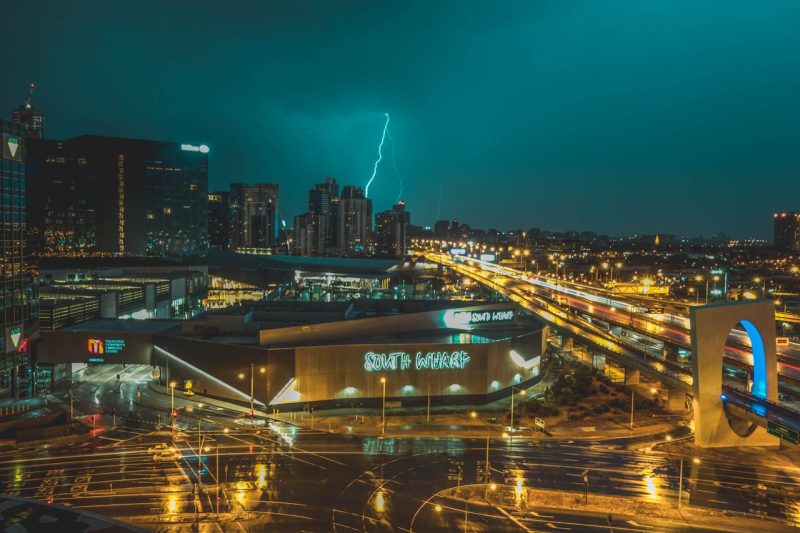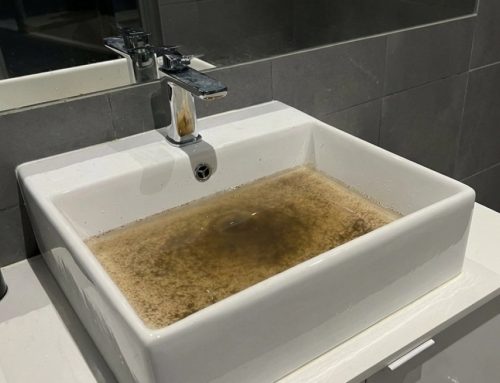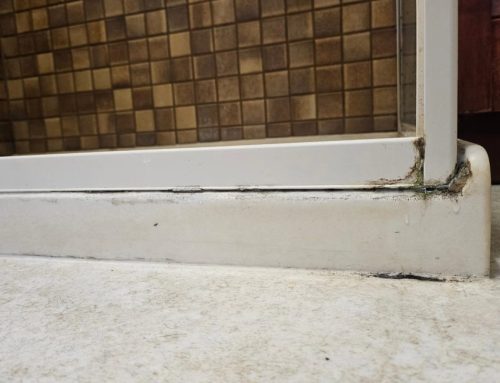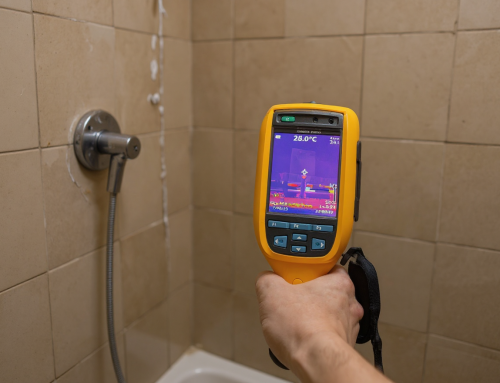Dealing with leaks in commercial properties can feel like a constant battle. Water damage can lead to hefty repair bills, disrupt business operations, and even affect tenant satisfaction. It’s essential for property managers and owners to have a solid plan for spotting and fixing these issues before they escalate. This guide will walk you through the common culprits behind leaks, how to find them early, and what to do once you’ve discovered them, helping you keep your commercial property in top shape.
Key Takeaways
- Leaks in commercial properties can cause significant structural damage, leading to expensive repairs and business downtime.
- Common leak sources include roofs, plumbing systems, HVAC units, and failing window or door seals.
- Proactive detection involves regular building inspections and the use of advanced technologies like acoustic sensors and thermal imaging.
- Swift action is needed to manage and repair leaks, minimising disruption and preventing further damage.
- Implementing preventative maintenance and monitoring systems helps avoid future leaks and protects your property’s value.
Understanding the Impact of Leaks in Commercial Properties
Water leaks in commercial properties aren’t just a minor inconvenience; they can really mess with your building and the businesses inside. Think about it – a small drip from a pipe or a leaky roof can quickly turn into a big problem. The financial fallout from unchecked leaks can be substantial, impacting everything from your utility bills to the structural integrity of your property. You’re looking at increased water and energy costs because of wasted resources, and that’s before we even get to the damage. Water can seep into walls, ruin flooring, damage electrical systems, and even compromise the foundation. This not only means expensive repair bills but also potential downtime for any businesses operating within your property, which is never good for tenant relations or your bottom line. Plus, persistent dampness can lead to mould growth, creating unhealthy environments and potential health hazards for everyone. It’s a domino effect, really, where one small issue can snowball into a much larger, more costly headache if you don’t catch it early.
Common Sources of Leaks in Commercial Buildings
Leaks in commercial properties can pop up in a surprising number of places, and knowing where to look is half the battle. These aren’t just minor annoyances; they can lead to significant structural damage, costly repairs, and serious disruption to your business operations. Understanding the common culprits helps you stay ahead of potential problems.
Roof Leaks
Roofs are the first line of defence against the elements, but they can be vulnerable. Things like damaged shingles, blocked gutters, or poorly sealed flashing around vents and skylights can let water in. Even a small breach can allow water to seep into the building’s structure, potentially causing damage to ceilings and walls over time.
Plumbing and Pipe Leaks
Commercial buildings have extensive plumbing systems, and these are frequent sources of leaks. Think about the constant use of sinks, toilets, and dishwashers in restrooms and kitchens. Pipes can corrode, joints can loosen, or a sudden freeze can cause a pipe to burst. A small crack in a pipe can surprisingly waste a lot of water, driving up your bills and potentially causing damage across multiple floors.
HVAC System Leaks
Your heating, ventilation, and air conditioning (HVAC) systems are complex and involve water. Condensation build-up, clogged drain lines, or issues with the condensate pump can all lead to leaks. These leaks often go unnoticed until water starts dripping from ceiling tiles or damaging ductwork, which can affect air quality and the building’s comfort.
Window and Door Seal Failures
While not always obvious, faulty seals around windows and doors can be a gateway for water. When seals degrade, rain can be driven into the building by wind, especially during storms. This can lead to water damage on window sills, walls, and even the flooring directly beneath.
Foundation and Basement Leaks
Basements and foundations are particularly susceptible, especially in older buildings. Cracks in the foundation, poor waterproofing, or issues with underground drainage can allow groundwater to seep in. This can compromise the structural integrity of the building and create damp, musty conditions that can lead to mould growth.
Detecting Leaks: Proactive Strategies
Spotting leaks early on is a smart move for any commercial property owner or manager. It’s all about being ahead of the game, rather than dealing with a soggy mess later. Think of it like a regular health check for your building; you want to catch any little problems before they turn into big, expensive ones.
Regular Inspections and Maintenance Schedules
Making time for routine checks is your first line of defence. This means setting up a schedule to look over the obvious spots – think around pipes, under sinks, and near water heaters. Don’t forget the roof and the areas around windows and doors, especially after a bit of rough weather. Keeping a log of these inspections is a good idea too. Note down anything that looks a bit off, even if it seems minor at the time. This history can be a lifesaver down the track when you’re trying to figure out where a persistent leak might be coming from.
Utilising Technology for Leak Detection
Beyond the good old-fashioned eyeball test, there’s a heap of tech available to help you out. You’ve got things like moisture meters that can tell you if building materials are holding more water than they should. Then there are acoustic sensors that listen for the sound of water escaping pipes, even when they’re hidden behind walls or under floors. Some systems use thermal imaging to spot temperature differences caused by moisture. For larger buildings, you might consider installing continuous monitoring systems with leak detectors. These systems keep an eye on water flow and can send alerts straight to your phone or computer if something looks unusual. The key is to pick the right technology for your specific building and its potential weak spots.
Investing in these detection methods isn’t just about fixing a problem; it’s about protecting your asset, reducing future costs, and keeping your tenants happy. It shows you’re serious about maintaining the property properly.
Managing and Repairing Leaks Effectively
Once a leak has been identified, prompt and effective management is key to minimising damage and costs. It’s not just about stopping the water; it’s about addressing the root cause and restoring the affected areas properly. This involves a structured approach to ensure the problem is fully resolved and doesn’t reappear.
Immediate Actions to Contain the Leak
When you discover a leak, the first priority is to stop or minimise the flow of water. This might involve shutting off the main water supply to the affected area or the entire building if necessary. If the leak is from a specific fixture or appliance, try to isolate it. For instance, turn off the valve under a leaking toilet or sink. If water is pooling, use buckets or towels to contain it and prevent it from spreading to other parts of the building or damaging sensitive equipment. Removing standing water quickly is vital to prevent further structural damage and mould growth.
Professional Assessment and Repair
For anything beyond a minor drip, it’s wise to bring in professional commercial plumbers. They have the specialised tools and knowledge to accurately pinpoint the leak’s origin, especially if it’s hidden within walls or under floors. This might involve using acoustic sensors that listen for the sound of escaping water or thermal imaging cameras to detect temperature differences caused by moisture. Once located, a qualified plumber or technician can carry out the necessary repairs, whether it’s replacing a faulty pipe, fixing a seal, or repairing a damaged fixture. Getting the repair done right the first time saves you money and hassle in the long run.
Restoring Damaged Areas
After the leak is repaired, the work isn’t over. Water damage can lead to mould, rot, and structural weakening if not properly addressed. Depending on the extent of the damage, this might involve drying out affected materials, replacing damaged drywall, flooring, or insulation, and treating the area to prevent mould growth. It’s important to ensure that all moisture is removed and that the building materials are restored to their original condition to maintain the building’s integrity and the health of its occupants.
Documentation and Follow-Up
Keep detailed records of the leak, the repairs undertaken, and the costs involved. This documentation is useful for insurance claims, warranty purposes, and for tracking the maintenance history of your property. A follow-up inspection a few weeks after the repair can confirm that the issue is fully resolved and that no secondary problems, like mould, have started to develop. For areas prone to leaks, consider installing monitoring systems to catch any future issues early.
Preventing Future Leaks: Long-Term Solutions
Preventing future leaks is all about being smart with your building’s systems and keeping a close eye on things. It’s not just about fixing what’s broken; it’s about setting up your property so problems are less likely to pop up in the first place. Think of it as building a stronger defence against water damage.
Regular Inspections and Maintenance Schedules
Sticking to a regular maintenance schedule is your first line of defence. It’s like taking your car in for a service – you catch small issues before they become big, expensive headaches. For commercial properties, this means:
- Visual Checks: Regularly walk through your building, paying attention to ceilings, walls, and floors for any signs of dampness, discolouration, or water stains. Don’t forget to check around pipes, under sinks, and near appliances.
- Plumbing System Checks: Have your plumbers inspect visible pipes, valves, and fixtures periodically. They can spot early signs of corrosion, wear, or minor drips that you might miss.
- Roof and Gutter Maintenance: Clean out gutters and downspouts at least twice a year, especially after autumn. Inspect the roof for any damaged or missing shingles, and check seals around vents and skylights.
- HVAC System Servicing: Ensure your heating, ventilation, and air conditioning systems are serviced annually. Technicians can check for condensation leaks, clogged drain lines, and worn seals that could lead to water issues.
A proactive maintenance plan not only prevents leaks but also keeps your building’s systems running efficiently, saving you money on energy bills and unexpected repairs.
Utilising Technology for Leak Detection
Beyond manual checks, modern technology offers sophisticated ways to detect leaks early. These systems can provide real-time alerts, helping you act fast.
- Flow Monitoring Systems: These devices track your building’s water usage. If there’s a sudden, unexplained spike in consumption, it could indicate a hidden leak. They help you understand your water use patterns and flag anomalies.
- Point-of-Contact Sensors: These are placed in high-risk areas like near water heaters, under sinks, or along long pipe runs. When they detect moisture, they send an immediate alert to your phone or a central monitoring system.
- Cable Sensor Systems: These are particularly useful for covering large areas or long pipe runs. The cables detect moisture along their entire length, pinpointing the exact location of a leak, which is great for basements or crawl spaces.
- Wireless Sensor Networks: These systems use multiple sensors that communicate wirelessly. They offer flexibility in placement and can cover large or complex buildings efficiently, sending alerts remotely.
Implementing these technological solutions can significantly reduce the risk of major water damage and associated costs. Choosing the right technology depends on your building’s layout, budget, and specific vulnerabilities. It’s about creating a layered defence that catches problems before they escalate.
Keeping Your Property Safe and Sound
So, there you have it. Dealing with water leaks in commercial spaces isn’t just about fixing a drip; it’s about protecting your investment and keeping things running smoothly. By keeping an eye out for those early warning signs and knowing when to call in the pros with their fancy gear, you can dodge a lot of potential headaches and big bills down the track. It’s really about being proactive, you know? A little bit of attention now can save a whole lot of trouble later, keeping your tenants happy and your building in good nick.
Frequently Asked Questions
What are the tell-tale signs that there might be a water leak in our building?
Keeping an eye out for unusual water bills is a good start. You might also notice water stains appearing on your ceilings or walls, or perhaps a damp, musty smell that just won’t go away. Sometimes, you might even see puddles of water where they shouldn’t be, or notice the water pressure dropping unexpectedly.
Where do leaks commonly pop up in commercial buildings?
Commercial buildings can be tricky because they’re often quite large and have pipes hidden away. Things like the roof, plumbing systems, air conditioning units, and even seals around windows and doors can all be weak spots where leaks might start. Old buildings with older pipes are also more prone to leaks.
How do you find leaks without damaging the building?
We use some clever technology to find leaks without having to rip into the walls or floors. Things like special microphones can listen for the sound of escaping water, even if it’s hidden. We also use cameras that can see temperature differences caused by water, or tools that measure how wet the building materials are.
Why is it so important to fix leaks quickly?
It’s really important to sort out leaks straight away. Firstly, it stops the problem from getting worse and causing more damage, which saves you money on repairs. It also means you’re not wasting water, which helps keep your bills down. Plus, it stops mould from growing and keeps everyone inside safe and healthy.
What are the best ways to prevent leaks from happening in the first place?
Regular check-ups are key! Setting up a schedule for inspections means you can catch small issues before they become big problems. Using technology that keeps an eye on your plumbing systems can also give you a heads-up if something isn’t right, allowing you to act fast.
What happens after a leak is found and how do you fix it?
When we find a leak, we’ll tell you exactly where it is and how bad it is. Often, we can fix it right then and there to stop the leak. For bigger buildings or ones that have had leaks before, we might suggest setting up special monitoring systems that can alert you straight away if a new leak starts.














